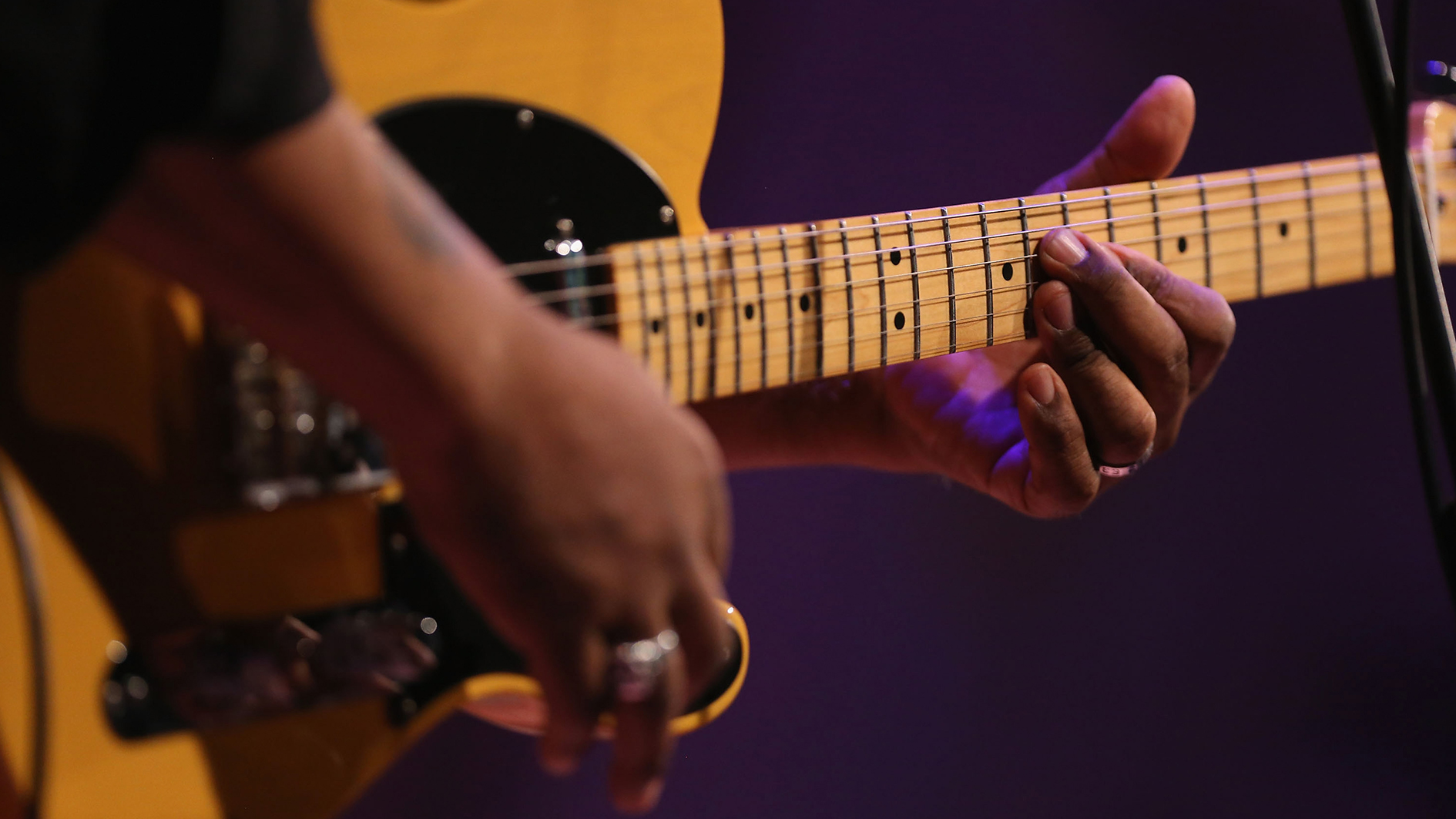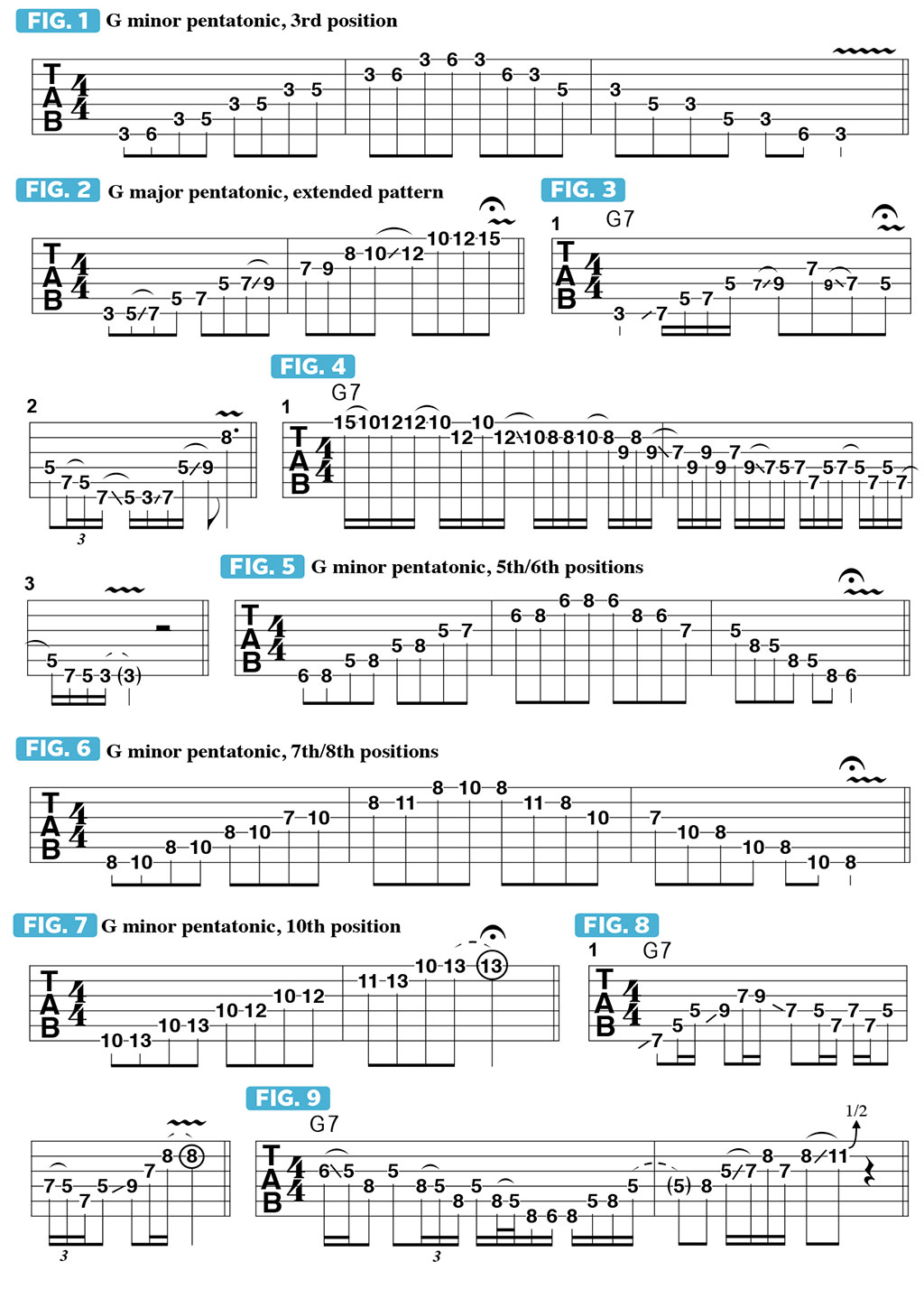Linking parallel major and minor pentatonic patterns will take your blues playing to the next level - here's how
Switching between these scales is an essential part of blues soloing

An essential tenet of blues guitar soloing is to switch back and forth between parallel minor and major pentatonic scales. A typical 12-bar blues progression consists of three chords, the I (one), the IV (four) and the V (five). In the key of G, the I chord is G (or G7), the IV chord is C(7) and the V chord is D(7).
The G major scale is spelled G, A, B, C, D, E, F#, and so the fourth note is C, also known as the fourth of G, and the fifth is D. Both G minor pentatonic (G, Bb, C, D, F) and G major pentatonic (G, A, B, D, E) sound great when played over the progression.
Parallel major and minor pentatonic balance well against each other in regard to creating improvised melodies that create either a darker, bluesy sound - minor pentatonic - or a brighter, happier sound - major pentatonic.
A great way to learn how to move freely from scale to scale is to study each on different areas of the fretboard, to facilitate connecting melodic lines built from each scale.
FIGURE 1 shows G minor pentatonic played in the 3rd position, ascending and descending. FIGURE 2 illustrates an extended pattern of G major pentatonic, shown in ascending form.
This pattern is especially useful when crafting solos because the position shifts occur on the 6th, 4th and 2nd strings, with three notes played one each of these strings, via a legato finger slide, and the fretboard is traversed from the 3rd position all the way up to the 12th. Notice how the slides lend a melodic quality to the scale.

FIGURE 3 offers an example of moving up and down through this G major pentatonic pattern while using melodic phrasing to create a line that’s typical of what is often played in major pentatonic-based solos.
FIGURE 4 offers another example of moving freely around the fretboard while staying diatonic within G major pentatonic. The phrasing possibilities and variations are, of course, endless.
Since this G major pentatonic pattern moves through different positions, it’s logical to look at all of the boxes of G minor pentatonic, so that we clearly see where and how the two scales will intersect.
FIGURE 5 illustrates G minor pentatonic in the 5th/6th positions, ascending and descending. Be sure to memorize this pattern. FIGURE 6 shows G minor pentatonic in the 7th/8th positions, and FIGURE 7 presents the scale in the 10th position.
As illustrated, the extended pattern of G major pentatonic from FIGURE 2 started in the 3rd position and moved up to the 12th, so each of these higher positions of G minor pentatonic will intersect that extended pattern.
For example, if you play G major pentatonic-based lines in FIGURE 8, you’ll see that they balance well with the G minor pentatonic lines in FIGURE 9. Continue moving up the board with an eye, and ear, for connecting these two parallel scales in melodically inventive ways.
Guitar World Associate Editor Andy Aledort is recognized worldwide for his vast contributions to guitar instruction, via his many best-selling instructional DVDs, transcription books and online lessons. Contact Andy at andyaledort.com.
Get The Pick Newsletter
All the latest guitar news, interviews, lessons, reviews, deals and more, direct to your inbox!
Guitar World Associate Editor Andy Aledort is recognized worldwide for his vast contributions to guitar instruction, via his many best-selling instructional DVDs, transcription books and online lessons. Andy is a regular contributor to Guitar World and Truefire, and has toured with Dickey Betts of the Allman Brothers, as well as participating in several Jimi Hendrix Tribute Tours.
“There are so many sounds to be discovered when you get away from using a pick”: Jared James Nichols shows you how to add “snap, crackle and pop” to your playing with banjo rolls and string snaps
Don't let chord inversions bamboozle you. It's simply the case of shuffling the notes around








![Joe Bonamassa [left] wears a deep blue suit and polka-dotted shirt and plays his green refin Strat; the late Irish blues legend Rory Gallagher [right] screams and inflicts some punishment on his heavily worn number one Stratocaster.](https://cdn.mos.cms.futurecdn.net/cw28h7UBcTVfTLs7p7eiLe.jpg)


